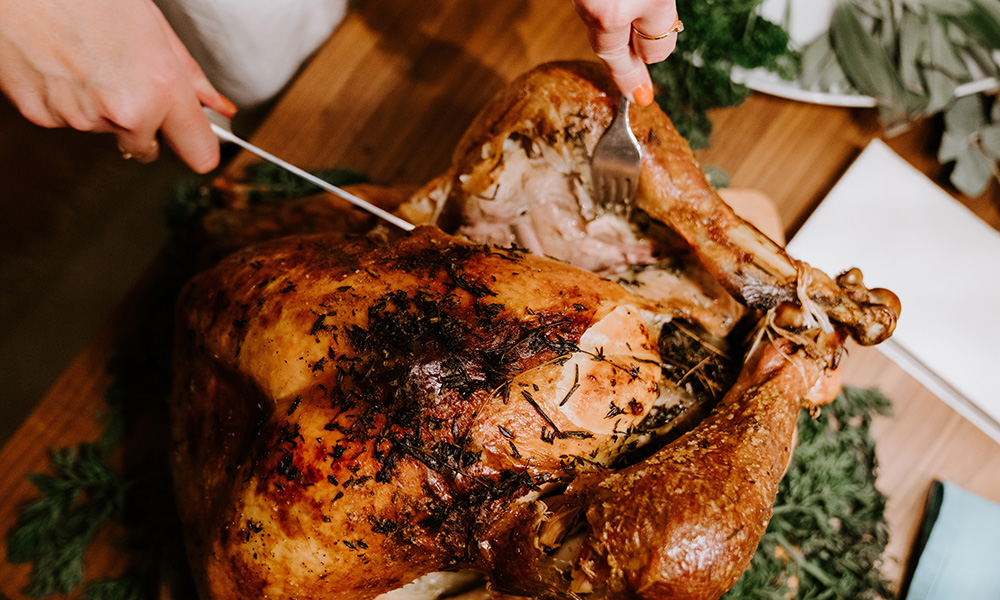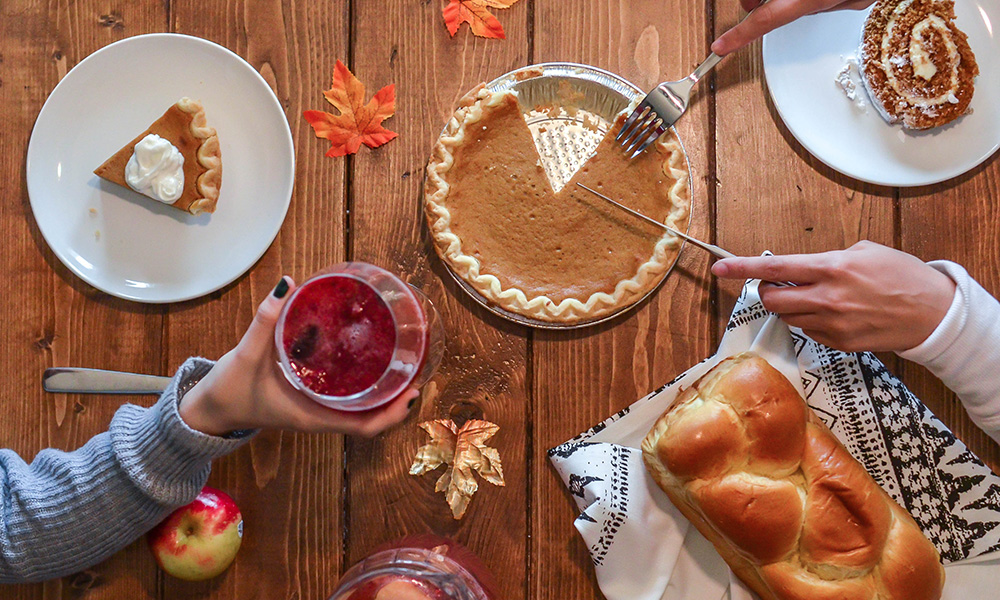
Thanksgiving is a time for families to get together… and celebrate science. From kitchen chemistry to afternoon naps, science underlies many of our favorite family traditions. For this holiday season, we’ve gathered five of our favorite science facts to get your whole family learning together.
- Tryptophan doesn’t really make you sleepy. A good nap after the big Thanksgiving meal is about as classic as turkey itself. Many of us grew up hearing that the culprit behind our collective lethargy was tryptophan, an amino acid found in turkey, as well as other meats, cheeses and nuts. While it’s true tryptophan is needed to produce melatonin and that consuming large quantities of the amino acid in isolation can produce drowsiness, tryptophan is only one of many amino acids eaten at Thanksgiving. Given that all these amino acids are being absorbed all at once, the effects of any one are minimal. Instead, the real reason behind Thanksgiving sluggishness is probably a combination of overeating, consuming a large amount of carbohydrates, and perhaps some well-needed recovery from a high-energy family meal.
- Browning food is a science. Speaking of amino acids, they are key to producing a perfectly cooked turkey or toasting the marshmallows on top of sweet potato casserole. This particularly delicious chemistry phenomenon is called the Maillard reaction and it happens when amino acids and sucrose are heated to ~300 Fahrenheit. The reaction produces brown colors, that distinctly sweet flavor, and also help makes the room smell delicious.
- Yams and sweet potatoes aren’t the same vegetable. Your aunt can call them what she wants, but unless she visited a specialty farmers market, there’s a good chance her marshmallow-topped casserole is really candied sweet potatoes. Yams and sweet potatoes look alike and can even taste similarly, but actuality diverged more than 120 million years ago. Yams are monocots that are native to Africa and Asia, while sweet potatoes were dicots domesticated in Central and South America. The similarities between yams and sweet potatoes are instead the result of convergent evolution, where having starch-filled roots to store nutrients helped all of these plants survive difficult conditions. Given the predominance of sweet potatoes, yams are difficult – though not impossible – to find in America. However, don’t despair that your candy yams aren’t authentic. Sweet potatoes are packed with more amylase, an enzyme that turns its starch into maltose, giving them their rich, sweet taste.
- Pumpkin pies made from canned pumpkin are probably squash pies. Well, technically all pumpkin pies are squash pies, as pumpkin is a squash. However, if you are making pumpkin pie from puree, know that you’ll probably be consuming a mix of butternut squash, as well as less known squash varieties like Hubbard and Golden Delicious. Before you rush out to roast your own pumpkin this Thanksgiving, know that other squash hold comparatively less water and have less fibrous strings, making them sweeter and richer for pies. If you do decide to make a true pumpkin pie, make sure you get a sugar pumpkin as opposed to a leftover carving pumpkin. Farmers bred these Halloween classics for size and their taste is reported as being just okay.
- There are no shortcuts for good mashed potatoes. My first food processor dramatically changed my experience with cooking. Food that once took 20 or 30 minutes of intense chopping and mixing could be prepared with a push of a button. However, not all foods respond well to a food processor and potatoes are atop this list. For those of you lucky enough to not have experienced this culinary disaster firsthand, even 30 seconds of food processing is enough to turn potatoes into sticky, inedible glue. The reason for this is that potatoes are highly starchy, and the fast-moving blades rupture the cells and release the glue-like starch. Mashing with a masher or ricer by comparison, allows you to keep the potato cells largely intact and make the best version of the classic creamy side dish.
